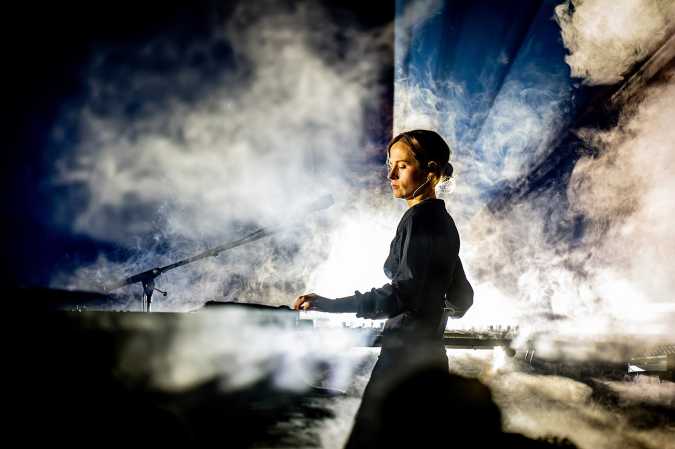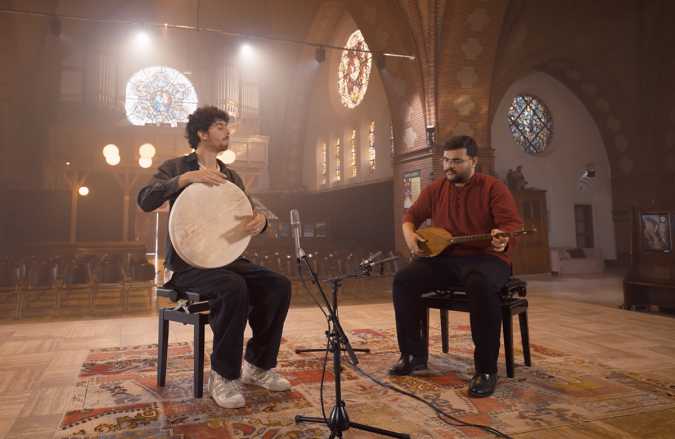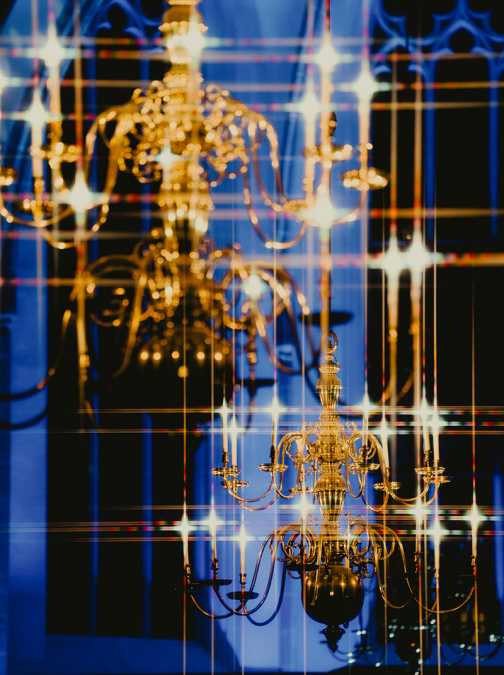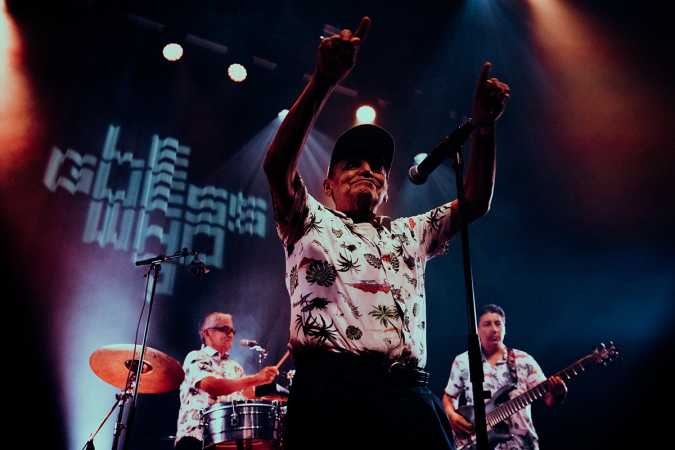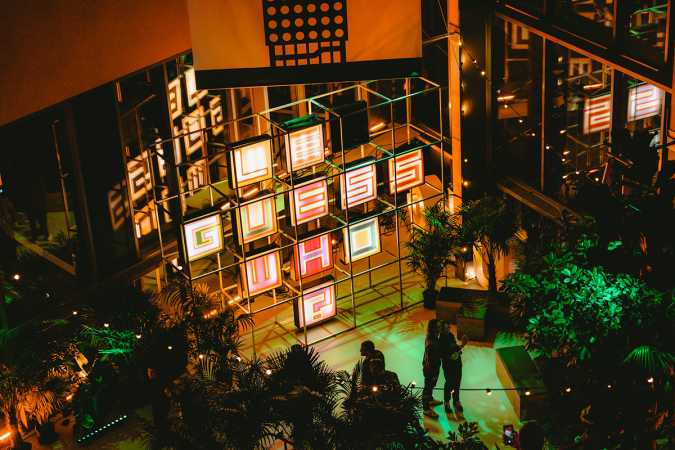VPRO Vrije Geluiden has been a partner of Le Guess Who? for numerous years, and during this year's festival, they again captured several sessions with artists - recorded at Bibliotheek Neude in Utrecht - that will be revealed over the next couple of weeks. Watch below.
The Good Ones
The Good Ones will surprise you, delight you, and break your heart, says The Independent. This one-of-a-kind quartet’s music is embedded in pain, as the band formed as a healing process following the Rwandese genocide (which took founding member Janvier Havugimana’s older brother, also their music teacher). It is also, however, overflowing with hope, as the original trio reunited Rwanda’s three tribes (Tutsi, Hutu, and Abatwa), and served as an active attempt to seek out ‘the good ones’, after having endured unthinkable horrors.
Mong Tong 夢東
Mong Tong 夢東 takes us to the east-side of dreams with their sample based psychedelic music. With hypnotic rhythms and dreamy melodies, they create a videogamelike realm. You're wondering why brothers Hom Yu and Jiun Chi are blindfolded? They explore their mutual obsession for Taiwanese occult-inspired art and vintage superstitious imagery, channelling it through music.
Ustad Noor Bakhsh
Noor Bakhsh is a true ustad (master) of the Benju, and specific the instrument of Balochistan, Pakistan: Balochi Benju. Ustad Noor Bakhsh has been mastering this keyed instrument ever since he was a child, growing up in the fishing port city of Pasni, Pakistan. Now in his 70s, he's gaining international acclaim thanks to his singular talent. For this session, he is accompanied by Doshambay on Damboora.
Pankisi Ensemble
Traditional melodies from Georgean folklore, Chechnyan songs and 'zikr' with sufi roots carried by typical polyphony from the Caucasus and more specific Georgia: The Pankisi Ensemble is firmly based in tradition, but not afraid to experiment.
Le Cri du Caire
Singer, writer and poet Abdullah Miniawy became an artistic emblem for Egypt’s agitated youth in the wake of the revolution. Alongside Peter Corser on the saxophone and Karsten Hochapfel on the cello, he formed Le Cri du Caire. The three-piece blends jazz, Sufi poetry, oriental flourishes, and spoken word into a rich musical universe transcending identities and borders.
Khorshid & Sepand Dadbeh
Iranian musician Khorshid Dadbeh began her musical journey early, having grown up in an artistic family and beginning to play the setar (considered to be the supreme instrument of Persian classical music in modern Iran) with her father. Following that, Dadbeh studied the tanbour and the tar at the Conservatory of Tehran, learning from the instruments’ masters. After performing at the festival as part of the program presented by LGW and U?, Khorshid presents us a spiritual musical journey through the rich depths of Iranian and Persian culture together with her brother Sepand Dadbeh, who plays the oud, in this session.
Sophie Nzayisenga
Few master the inanga (an oval-shaped, harp-like device that many have called Rwanda's most important musical instrument) like Sophie Nzayisenga. The instrument has been in her life since an early age; hence, as a global ambassador for the inanga, Nzayisenga provides audiences with the outstanding opportunity to become acquainted with the precious instrument and its sound.
Photography by Serrah Galos
